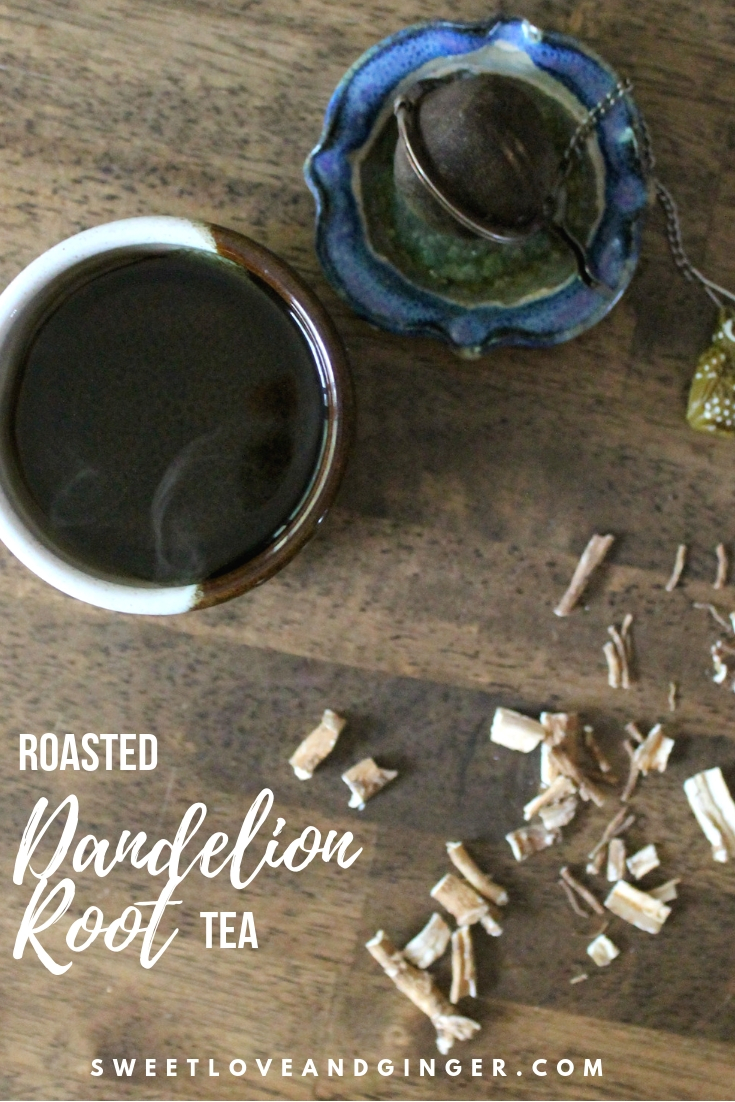Dandelions are a common sight around here as I think they are in most places. Typically they are the bane of the suburban homeowner’s existence and viewed as a prolific weed. Those of us that use plants as medicine, however, know better. We scoop up those babies in early spring and use every single part. The leaves get sauteed for dinner. The flowers get fried, put into pancakes, or fermented into wine. And the roods become dandelion root tea.
In more recent years I’ve even been seeing dandelion root tea on grocery store shelves from companies like Traditional Medicinals. It’s often touted for its high antioxidant and anti-inflammatory qualities.
When to Harvest Dandelion Roots
Typically dandelion roots are best harvested in late fall when they are sweeter and have a higher concentration of inulin, which is beneficial to gut health. However, it is fine to harvest them in spring, as they will still be beneficial to digestion and overall well being. Summer harvests don’t yield as medicinally beneficial a tea because the plant is focused on growing and reproducing at that time.
If I can offer you any bit of advice when attempting to harvest dandelion roots, it’s to use a tool. Dandelions have massive taproots, which makes them notoriously hard to pull out. A long trowel or narrow shovel will be a lifesaver here, especially for those really big ones that have a tendency to just break off.
Preparing Dandelion Roots for Tea
Once you’ve harvested the roots, separate them from the green parts, and wash gently under cool water.
Cut into uniform pieces and roast at 350 degrees, tossing often, until they are thoroughly dried and crisp.
I’ve cut them into roughly 1/4-1/2 inch pieces and roasted them for 20-30 minutes to achieve this texture.
How to Make Dandelion Root Tea
I like to crush the root with a mortar and pestle before making tea, but you don’t have to. Just cook it a bit longer to be sure your getting all the good stuff out of the roots.
In a small saucepan or stove top safe teapot combine 1 teaspoon of dandelion root per each cup of water. Bring to a boil, then reduce to a simmer and cook stirring often for 15 to 20 minutes.
Strain and serve.
Note: you don’t want to pre-boil the water and steep the root, as it will not pull all of the “stuff” out from the root.





Most of what you say happens to be supprisingly appropriate and it makes me wonder the reason why I had not looked at this in this light before. This particular piece truly did switch the light on for me as far as this particular subject matter goes. Nevertheless there is 1 factor I am not really too cozy with so whilst I try to reconcile that with the central idea of your issue, permit me see exactly what the rest of the subscribers have to say.Nicely done.
The very heart of your writing while sounding reasonable at first, did not work perfectly with me after some time. Somewhere within the sentences you actually managed to make me a believer but only for a very short while. I however have got a problem with your jumps in assumptions and one would do nicely to fill in those gaps. If you actually can accomplish that, I will definitely end up being fascinated.
You have made some really good points there. I checked on the web to learn more about the issue and found most people will go along with your views on this website.